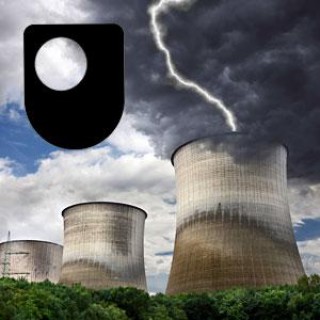Podcasts about photovoltaic cells
- 11PODCASTS
- 15EPISODES
- 34mAVG DURATION
- ?INFREQUENT EPISODES
- Dec 12, 2024LATEST
POPULARITY
Best podcasts about photovoltaic cells
Latest news about photovoltaic cells
- Efficient Derivatization of a Thienobenzobisthiazole‐Based π‐Conjugated Polymer Through Late‐Stage Functionalization Towards High‐Efficiency Organic Photovoltaic Cells Wiley: Angewandte Chemie International Edition: Table of Contents - Nov 11, 2024
- Asymmetric Alkyl Chain Engineering for Efficient and Eco‐Friendly Organic Photovoltaic Cells Wiley: Small: Table of Contents - Nov 5, 2024
- Hematite’s Hidden Power: A Green Hydrogen Breakthrough Hydrogen Fuel News - Jul 21, 2024
- μSMU – a small photovoltaic cell characterisation board Adafruit Industries – Makers, hackers, artists, designers and engineers! - Jun 5, 2024
- A Selenium‐Containing Polymer Donor Enables 16.9% Efficiency in Non‐Fused Electron Acceptor‐Based Organic Photovoltaic Cells Wiley: Advanced Energy Materials: Table of Contents - May 6, 2024
- The Role of Solution Aggregation Property towards High‐Efficiency Non‐Fullerene Organic Photovoltaic Cells Wiley: Advanced Materials: Table of Contents - Apr 26, 2024
- Design and Synthesis of Dibenzothiadiazolopyrrolothiophene (DBTPT)‐Based Acceptors for Efficient Organic Photovoltaic Cells Wiley: Advanced Functional Materials: Table of Contents - Mar 22, 2024
- Solar Cell Cycling Paths - These Dutch Cycling Paths Are Sheathed In Photovoltaic Cells (TrendHunter.com) TREND HUNTER - The Latest Trends - Dec 28, 2023
- Perovskite Solar Cell Mystery Solved, Now Comes The Hard Part CleanTechnica - Dec 27, 2023
- Breakthrough in the manufacture of photovoltaic cells Science Blog - Nov 23, 2023
Latest podcast episodes about photovoltaic cells
Arvin Ganesan is the CEO of Fourth Power, which is developing a flexible-duration thermal energy system designed to meet the needs of an electrical grid increasingly powered by renewables. Their system heats liquid tin to extremely high temperatures, circulates it through carbon blocks for heat storage, and converts that heat back to electricity on demand via thermal photovoltaics. The technology aims to address both short-duration energy storage (5–10 hours) and long-duration needs (100 hours or more), with the ability to discharge power within seconds.At the end of last year, Fourth Power raised a Series A led by DCVC, with participation from Breakthrough Energy Ventures. Arvin's fascinating career includes time in the U.S. Senate as a senior policy advisor to the late Senator Frank Lautenberg, over five years at the U.S. Environmental Protection Agency, and nearly six years at Apple as the head of global energy and environmental policy.In this episode, we explore Arvin's career path, his decision to join Fourth Power, and why the company's work matters for the future of energy storage.In this episode, we cover: [1:49] Arvin's career journey: From the EPA to Apple and beyond[8:13] Why Arvin chose to become CEO of Fourth Power[10:29] Focusing on electricity storage over industrial heat[12:06] Fourth Power's thermal energy storage system explained[17:11] How Fourth Power uses photovoltaics for efficient energy conversion[20:36] Trade-offs between Fourth Power's technology and lithium-ion batteries[25:03] Co-location strategies and powering renewable energy[28:21] Collaborating with utilities to meet grid demands[31:09] Fourth Power's milestones and current progress[32:57] Arvin's transition to a CEO role and what he's learning[34:59] Market optimism and the potential impact of Fourth Power's solutionRecommended Listening: Onshoring Clean Energy with Giulia Siccardo, MESCEpisode recorded on Aug 20, 2024 (Published on Dec 12, 2024) Stay Connected with MCJ:Cody Simms on LinkedIn | XVisit mcj.vcSubscribe to the MCJ NewsletterEnjoyed this episode? Please leave us a review! Share feedback or suggest future topics and guests at info@mcj.vc.
This week on the I Know Nothing Podcast, Marcus and George discuss Solar Power.How does solar power work? Are they better than wind power? How can they improve? We find out on the episode today.The Climate in Focus: the ESA (european space agency) have made plans to send a satellite to gain a hi-res view of greenhouse effect. Which will be a good statistic to assist the science around the climate conversation. Sadly, finning of Mako sharks have actually caused countries to list this apex predator as a vulnerable species.The Company in Focus: Let's Do It World - a charitable organisation that has helped organise a lot of the 'world clean-up day' events.As always, please do let us know if we missed anything or made any mistakes. This is a conversation and we want to learn just as much as you.
Today, I explore multi-junction (MJ) photovoltaic cells that are neither first or second generations. Multi-junction solar cells have multiple p-n junctions made of different semiconductor materials to produce an electric current in response to different wavelengths of light.
Victoria University chemist Jonathan Halpert discusses nano-scale materials he investigates for future photovoltaic cells.
Victoria University chemist Jonathan Halpert discusses nano-scale materials he investigates for future photovoltaic cells.
The Blueskin Resilient Communities Trust is working towards building three community-owned wind turbines that will help build the community's resilience and energy independence
The Blueskin Resilient Communities Trust is working towards building three community-owned wind turbines that will help build the community's resilience and energy independence
Lecture 22: PN Junction, Diode and Photovoltaic Cells
This lecture uncovers the basic science of semiconductor devices and solar cells, including p-n junction and photovoltaic effects. Also, it explains the phenomenon of Shockley-Queisser limit.
Lecture 7: Photovoltaic cells
Direct Solar/Thermal to Electrical Energy Conversion Technologies, Fall 2009
How, Germany has been investing significantly in renewable energy, and particularly in creating an industrial model for manufacturing and maintaining renewable energy products
Transcript -- The German model
Transcript -- How, Germany has been investing significantly in renewable energy, and particularly in creating an industrial model for manufacturing and maintaining renewable energy products
How, Germany has been investing significantly in renewable energy, and particularly in creating an industrial model for manufacturing and maintaining renewable energy products
Transcript -- The German model
Transcript -- How, Germany has been investing significantly in renewable energy, and particularly in creating an industrial model for manufacturing and maintaining renewable energy products
Lateral Nanoconcentrator Nanowire Multijunction Photovoltaic Cells
Dr. Peter Peumans discusses his work on the development of lateral nanoconcentrator nanowire multijunction photovoltaic cells. (October 2, 2008)














